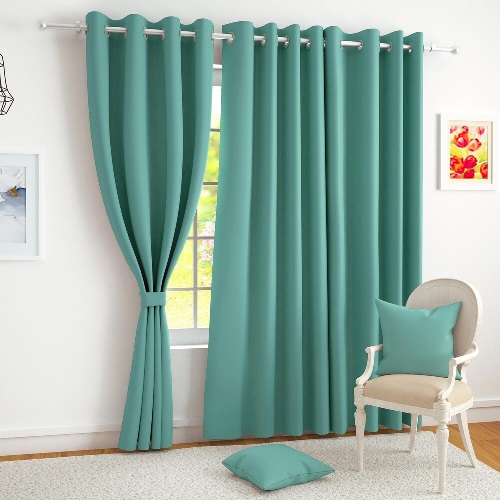Curtains are essential elements in home décor, offering functionality and aesthetic appeal. Among the various types, silk curtains stand out for their luxurious feel and appearance. This article provides a comparative analysis of silk curtains versus other popular curtain types.
Elegance and Aesthetics
- Silk Curtains: Silk curtains are synonymous with luxury. Their natural sheen and smooth texture add a touch of sophistication to any room. The fabric drapes elegantly, creating a graceful flow that enhances the overall ambiance.
- Other Curtain Types: While cotton and polyester curtains can be attractive, they often lack the natural luster of silk. Velvet curtains come close, offering a rich, opulent look, but they can be heavier and less fluid in movement. Linen curtains provide a casual, airy feel, which contrasts with the formality of silk.
Durability and Maintenance
- Silk Curtains: Silk is a delicate fabric that requires careful handling. It can be prone to sun damage, fading, and tearing if not properly maintained. Dry cleaning is usually recommended to preserve the fabric’s integrity and appearance.
- Other Curtain Types: Cotton and polyester curtains are much easier to maintain. They are generally machine washable and more resistant to wear and tear. Linen curtains, while also delicate, are more durable than silk and can often be machine washed on a gentle cycle. Velvet curtains need special care similar to silk but are more robust in terms of handling.
Light Control and Insulation
- Silk Curtains: Silk curtains offer moderate light control. They can block some light while allowing a soft, diffused glow into the room. However, they are not as effective at blocking out light as heavier fabrics. Insulation-wise, silk curtains provide minimal thermal benefits.
- Other Curtain Types: Blackout curtains, often made from polyester or lined fabrics, excel in light control, making them ideal for bedrooms and media rooms. Velvet curtains are excellent insulators, providing both light blocking and thermal benefits. Linen curtains, on the other hand, offer less light control but are great for bright, airy spaces.
Cost and Value
- Silk Curtains: The cost of silk curtains is significantly higher compared to other types. Their luxurious appeal and the natural properties of silk justify the price, making them a worthwhile investment for those seeking elegance and sophistication.
- Other Curtain Types: Cotton and polyester curtains are budget-friendly and widely available. They offer good value for money with decent durability and a variety of designs. Velvet curtains are moderately priced, offering a balance between luxury and cost. Linen curtains are also reasonably priced and provide a unique aesthetic that can complement various decor styles.
Environmental Impact
- Silk Curtains: Silk is a natural, biodegradable fabric, which makes it an eco-friendly option. However, the production process involves significant resources and ethical concerns related to silk farming.
- Other Curtain Types: Cotton is a natural fiber but requires substantial water and pesticides to grow, impacting the environment. Polyester, a synthetic fiber, is less eco-friendly due to its petroleum-based production process. Linen is one of the most eco-friendly options, as it is made from flax plants that require minimal water and pesticides.
Conclusion
Choosing between silk curtains and other types depends on your priorities. Each type offers unique benefits, ensuring you can find the perfect match for your home décor needs.

